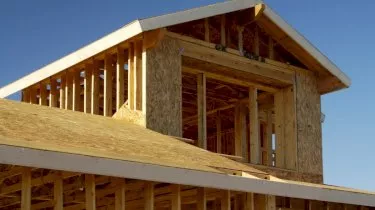Invest
5 tax-effective renovations for your investment property
Investors may be able to receive thousands more in tax deductions on renovations by carefully choosing their fixtures, fittings and materials, according to one quantity surveyor.
5 tax-effective renovations for your investment property
Investors may be able to receive thousands more in tax deductions on renovations by carefully choosing their fixtures, fittings and materials, according to one quantity surveyor.

Mike Mortlock, managing director of MCG Quantity Surveyors, said it is possible for investors to effectively utilise depreciation to minimise tax on renovations to their investment property whilst still achieving quality results.
“By understanding what items create the most tax-effective benefits, you can make smarter choices that will add thousands to your result without having to outlay a penny more in costs,” he explained.
Here are Mr Mortlock’s top five tips to reduce tax paid when renovating:
Invest in the kitchen not the bathroom

According to Mr Mortlock, nearly all kitchen appliances are considered plant and equipment by the ATO, unlike many bathroom features. As a result, opting to revamp the cooking space over the bathroom can improve your tax outcome.
“Kitchen renovations attract higher depreciation rates than bathrooms because of the sheer quantity of assets defined as plant and equipment items – the very things that depreciate fastest under the ATO (Australian Taxation Office) guidelines,” he said.
“I’ve run some typical numbers based on a $20,000 renovation, and choosing to spend up in the kitchen instead of the bathroom can result in an additional $2,000 in deductions across the first three years.”
Carpet over tiles
Mr Mortlock recommended investors contemplate carpet or floating timber for their floor finish, as both are defined as plant and equipment by the taxation office and are considered to have a 10 to 15 year effective life, in comparison to 40 years for tiles and concrete.
“Not only are their effective lives different, but so is the way their depreciation is calculated,” he explained.
“This means different rules apply, which results in carpet classed as depreciating by 20 per cent per year and floating timber at 13.3 per cent.
“In comparison, tile and concrete receive a simple 2.5 per cent depreciation rate each year.
“So, $1,000 of carpet can give you $200 worth of deductions in year one, while tile only allows $25 per annum.”
Small plant fixtures have significant impact
In many cases, small-scale plant items with an initial value of $301 can offer an instant tax deduction, Mr Mortlock said.
“If, for example, you’re considering cost-effective approaches to cooling rooms, ceiling fans could be the way to go,” he said.
“If you have one installed for $300 or less, you’ll get a $300 deduction right away.”
Update outdoor areas
Mr Mortlock advised investors to consider improving their rental properties by adding small outdoor extras. This, he said, can significantly maximise tax rebates.
“External fridges and barbecues, for example, help improve rental appeal while also providing excellent short-term tax deductions,” he said.
“So, while the tenants are cooking up a storm and enjoying a coldie from the fridge, you can be reducing your tax responsibilities and collect a higher rebate cheque.”
Cover windows
Lastly, Mr Mortlock identified window coverings as one of the most cost-effective means of improving a property’s value and utilising depreciation.
“They help with temperature control and filtering light, while also completing the property’s fresh, new look – and they’re a terrific tax deduction too.
“They can be purchased relatively cheaply and self-installed. Best of all, most homes have a lot of windows, so the deductable benefits are multiplied,” he concluded.

Property
Retirement communities: a pivotal element in meeting Australia's housing targets
The Retirement Living Council (RLC) has recommended that retirement communities should be considered a vital part in the Australian Government's initiative to fulfill the Housing Australia Future Fund ...Read more

Property
Australians adjust financial strategies amid changing property market dynamics
The 2023 calendar year saw Australian borrowers acquiring a total of $300.9 billion in new loans for property purchases, marking a 12.7% decrease from the previous year. Read more

Property
Split home loans unlocking doors for Aussie buyers
Australians are teaming up to dive into the real estate market and seize the advantages of home ownership, with the trend of split home loans surging as family and friends unite to buy properties ...Read more

Property
Real estate investment: Spotting high-growth potentials
Investing in real estate has long been a favoured approach for Australians looking to grow their wealth. Read more

Property
Granny flats become Aussie families' cost-effective solution to soaring living costs
As the cost of living skyrockets, a forward-thinking trend is sweeping across Australia – granny flats are becoming a favoured living arrangement for older Aussies seeking comfort and proximity to ...Read more

Property
Homebuyers grapple with extended savings period amid affordability crisis
Gone are the days when an Australian dream home seemed just within reach. The path to homeownership in Australia has extended by at least two arduous years, as revealed by the latest insights from ...Read more

Property
Hybrid development unlocks new potential for NDIS housing in metro hotspots
In a ground-breaking strategy aimed at addressing the stark imbalance between the location of Specialist Disability Accommodation (SDA) developments and the actual areas of demand, Aligned Disability ...Read more

Property
Property prices boosted by housing policies: RBA
The central bank has outlined the “pervasive” impact that policy has on property. Read more

Property
Retirement communities: a pivotal element in meeting Australia's housing targets
The Retirement Living Council (RLC) has recommended that retirement communities should be considered a vital part in the Australian Government's initiative to fulfill the Housing Australia Future Fund ...Read more

Property
Australians adjust financial strategies amid changing property market dynamics
The 2023 calendar year saw Australian borrowers acquiring a total of $300.9 billion in new loans for property purchases, marking a 12.7% decrease from the previous year. Read more

Property
Split home loans unlocking doors for Aussie buyers
Australians are teaming up to dive into the real estate market and seize the advantages of home ownership, with the trend of split home loans surging as family and friends unite to buy properties ...Read more

Property
Real estate investment: Spotting high-growth potentials
Investing in real estate has long been a favoured approach for Australians looking to grow their wealth. Read more

Property
Granny flats become Aussie families' cost-effective solution to soaring living costs
As the cost of living skyrockets, a forward-thinking trend is sweeping across Australia – granny flats are becoming a favoured living arrangement for older Aussies seeking comfort and proximity to ...Read more

Property
Homebuyers grapple with extended savings period amid affordability crisis
Gone are the days when an Australian dream home seemed just within reach. The path to homeownership in Australia has extended by at least two arduous years, as revealed by the latest insights from ...Read more

Property
Hybrid development unlocks new potential for NDIS housing in metro hotspots
In a ground-breaking strategy aimed at addressing the stark imbalance between the location of Specialist Disability Accommodation (SDA) developments and the actual areas of demand, Aligned Disability ...Read more

Property
Property prices boosted by housing policies: RBA
The central bank has outlined the “pervasive” impact that policy has on property. Read more






